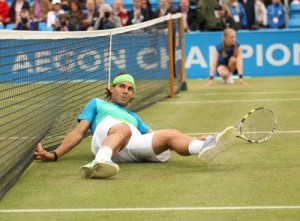Ever since Steven Simon became WTA CEO, ten events have been staged not only in Taiwan and Hong Kong but across Mainland China. The Elite Trophy Zhuhai is the eighth tournament on the women’s circuit to take place in Mainland China. The sportsbetting tennis odds of Mainland China hosting such events were never high, to begin with.
As such, events like the Elite Trophy Zhuhai have silenced a lot of naysayers. With other premier 5 events typically hosted in cities like Dubai and Rime, some fans have wondered how Wuhan ever came to host the Dongfeng Motor Wuhan Open.
One would probably point to Wuhan’s determination to elevate its status in China and the world over. Home to 10 million people, the fact that Li Na, Asia’s only grand slam champion, came from Wuhan probably acted as a driving force.
Octagon, the sports agency that owns the Premier 5 tournament, began talking to Wuhan’s municipal government in 2012 about the possibility of leasing the tour shortly after Li Na won her first slam and became the second-highest-paid female athlete in the world.
Li Na’s retirement in 2014 disappointed fans but didn’t derail talks, especially when $225 million was availed to build a state of the art tennis facility in Wuhan. Some pundits hoped that Li Na would get to play on home soil, but that won’t happen.
None the less, the investment paid off; Tennis has become the vehicle through which Wuhan’s name has gained recognition, mentioned alongside the likes of Cincinnati and Toronto. If properly executed, the massively expensive branding exercises could soon put Wuhan on the same level as Beijing, Shanghai, and other significant Chinese cities.
Of course, seeing as the tournament is still new and the stadium is situated in a developing area, it is only natural for Wuhan to struggle to attract a big live audience. Rarely do they come close to filling the 15,000 seats of the stadium in any given session.
According to Steve Simon, Wuhan must change the tournament from a typical competition to an event. It isn’t enough to simply mimic the goings-on of tournaments in bigger cities.
Fans must be educated about Tennis until they gain a sense of familiarity. The empty seats often seen on TV do not help the WTA; unfortunately, the attendance issue won’t be resolved anytime soon.
Even if the attendance were to rise, though, Wuhan would still struggle to attract new international partners.
The tour is such a massive investment that it will be several years before those involved can begin breaking even or profiting; more international partners would help Wuhan contend with the financial aspects of the tournament, especially taking into account the new infrastructure rising in the city. The investment is simply too massive.
Attracting interest would probably be easier if Li Na was still playing tennis. She sparked a tennis revolution in China during the peak of her popularity. Right now, Wuhan is depending on initiatives like the Amateur City League Club (which engages 3,000 players in nearly two dozen Chinese Cities) to spread the Tennis Culture.
If Wuhan continues pushing tennis in China, and with the WTA establishing a position in the Chinese marketplace, the tour could continue to expand in the region. The key is to host enough tennis events in China to make Tennis commonplace, but without over saturating the market.
There must be a balance of sorts, especially if Wuhan is to recoup its investment in the long run.



